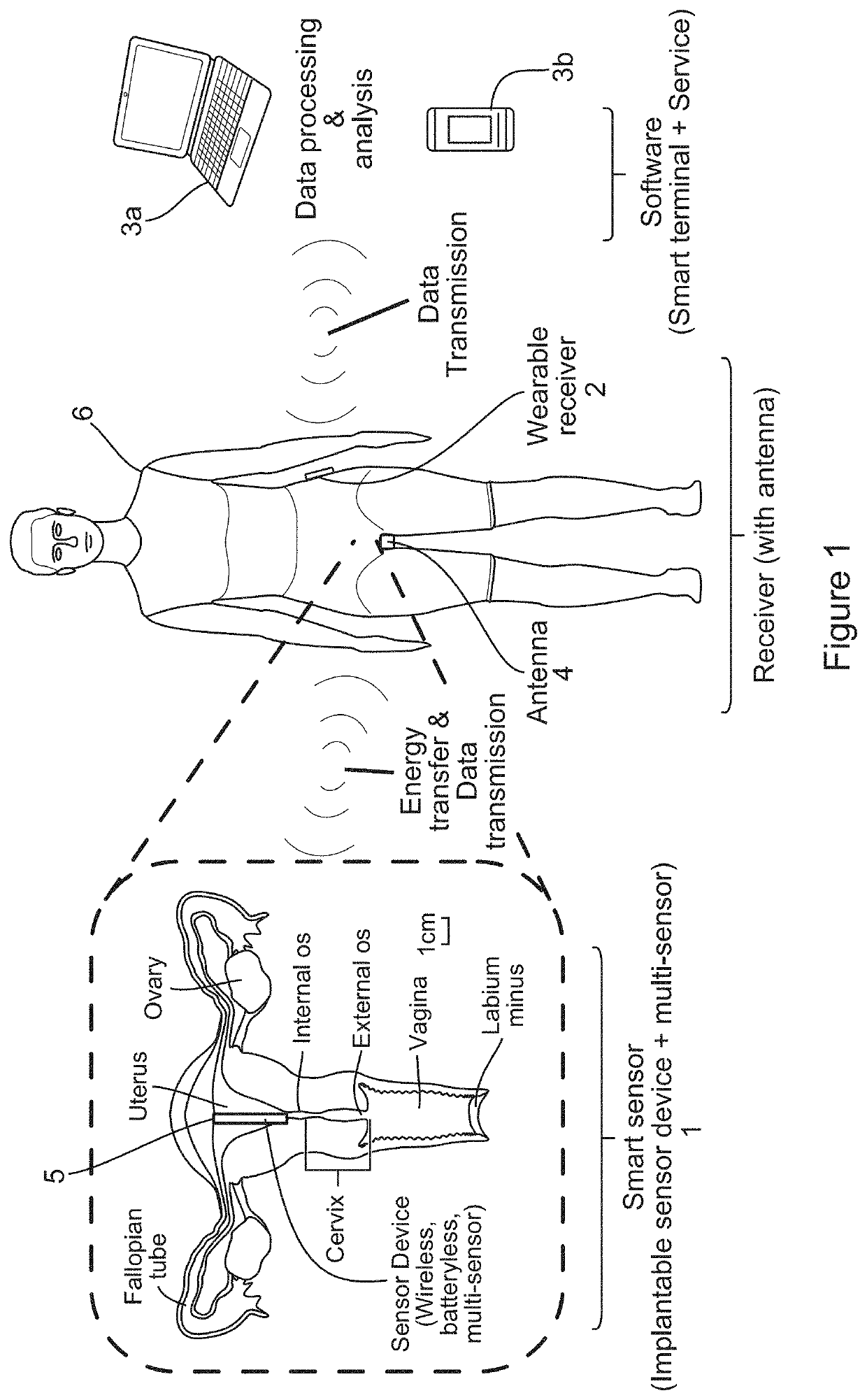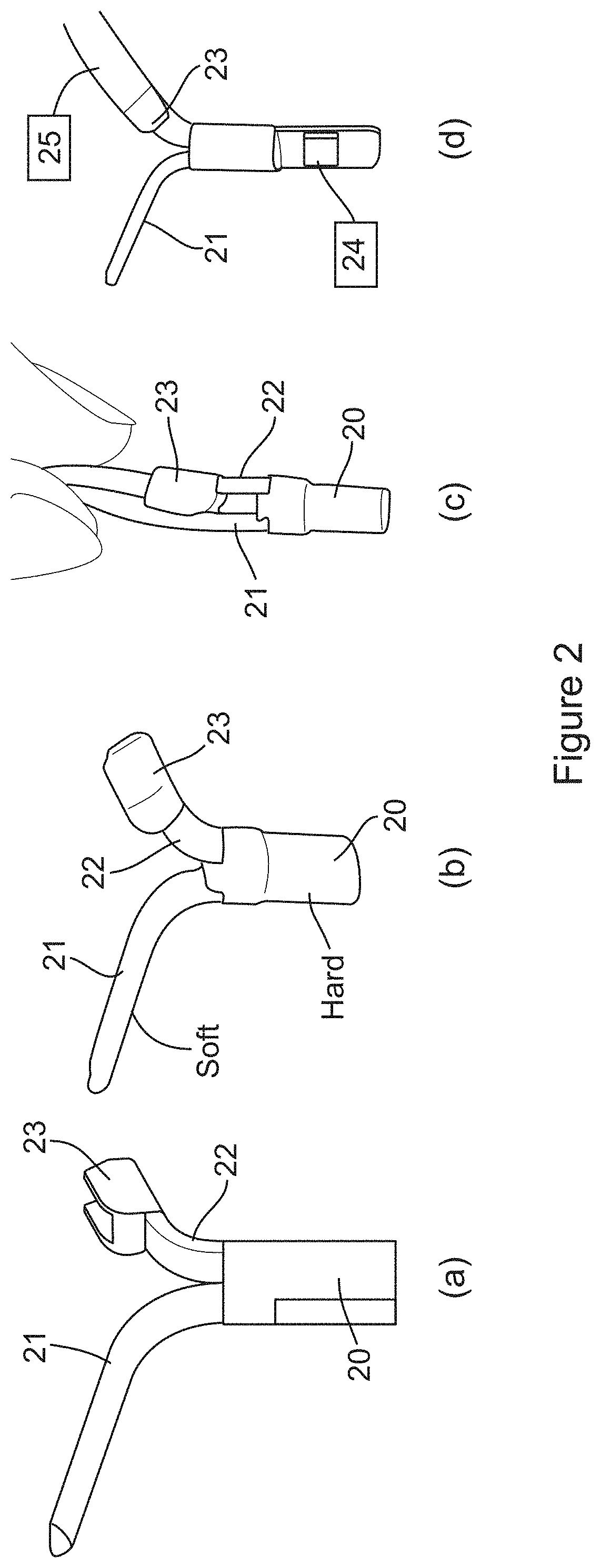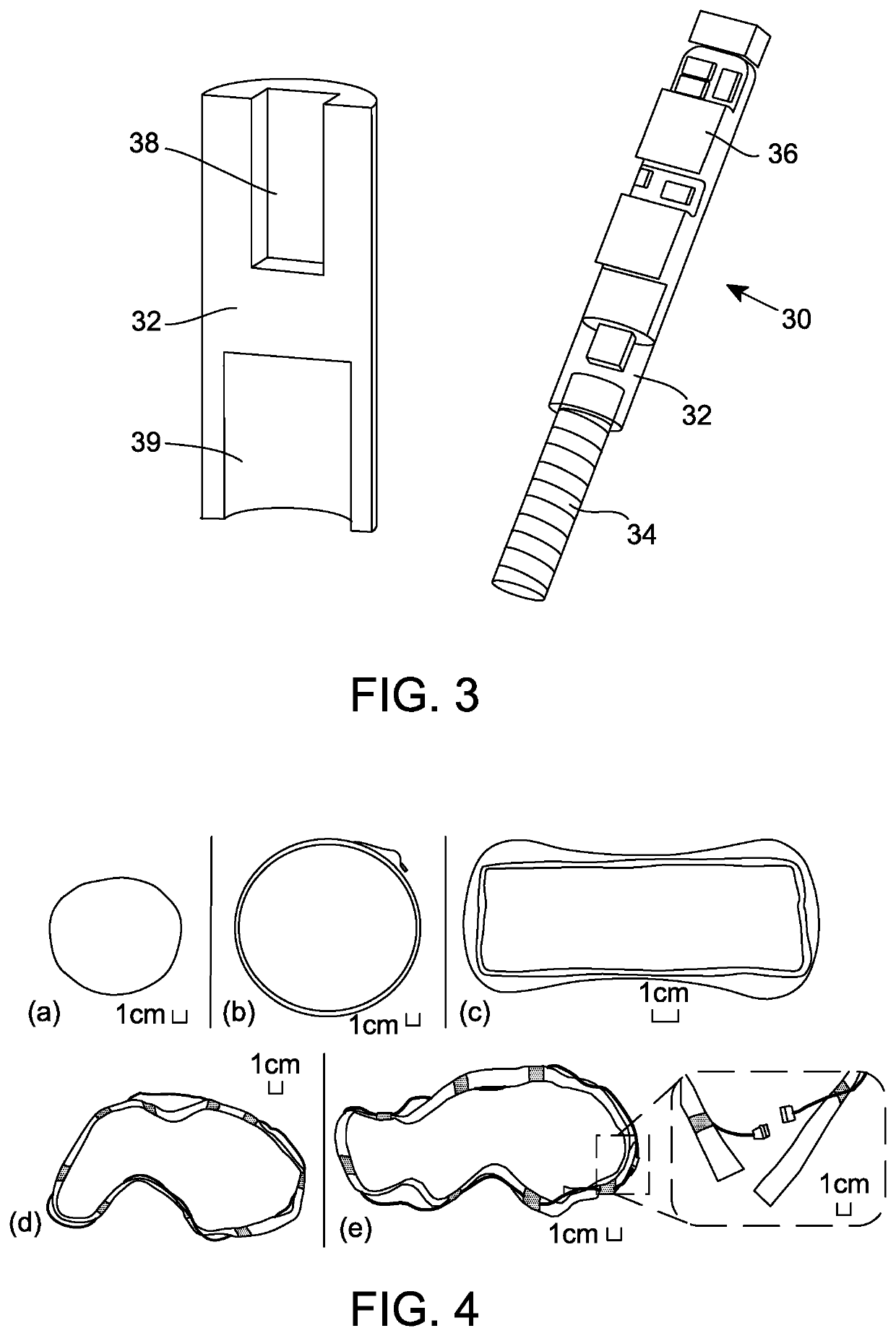Intra-uterine monitoring system
a monitoring system and intrauterine technology, applied in the field of intrauterine monitoring system, can solve the problem of not enabling real-time long-term in-vivo monitoring
- Summary
- Abstract
- Description
- Claims
- Application Information
AI Technical Summary
Benefits of technology
Problems solved by technology
Method used
Image
Examples
Embodiment Construction
[0033]Referring to FIG. 1, a three-module structured multi-parameter in-vivo sensing platform for intra-uterine environment monitoring is shown. The platform comprises a smart sensor 1 (implantable sensor device, which is suitably shaped and dimensioned for implantation in a human uterus), an external, generally wearable, receiver 2 and monitoring software installed on suitable data processing hardware, such as a computer 3a or portable electronic device 3b. The smart sensor 1 is a fully implantable (within the uterus 5 of a human female body 6) sensor device incorporating multiple embedded biosensors (intended for measuring temperature, dissolved oxygen concentration (DOC) and pH). Temperature, DOC and pH are considered to be the three most important parameters to measure for this application because they maintain a homeostatic controlled balance of gases and acid-base which is vital to human life and reproduction. They are likely to determine the receptivity of the intra-uterine e...
PUM
 Login to View More
Login to View More Abstract
Description
Claims
Application Information
 Login to View More
Login to View More - R&D
- Intellectual Property
- Life Sciences
- Materials
- Tech Scout
- Unparalleled Data Quality
- Higher Quality Content
- 60% Fewer Hallucinations
Browse by: Latest US Patents, China's latest patents, Technical Efficacy Thesaurus, Application Domain, Technology Topic, Popular Technical Reports.
© 2025 PatSnap. All rights reserved.Legal|Privacy policy|Modern Slavery Act Transparency Statement|Sitemap|About US| Contact US: help@patsnap.com



